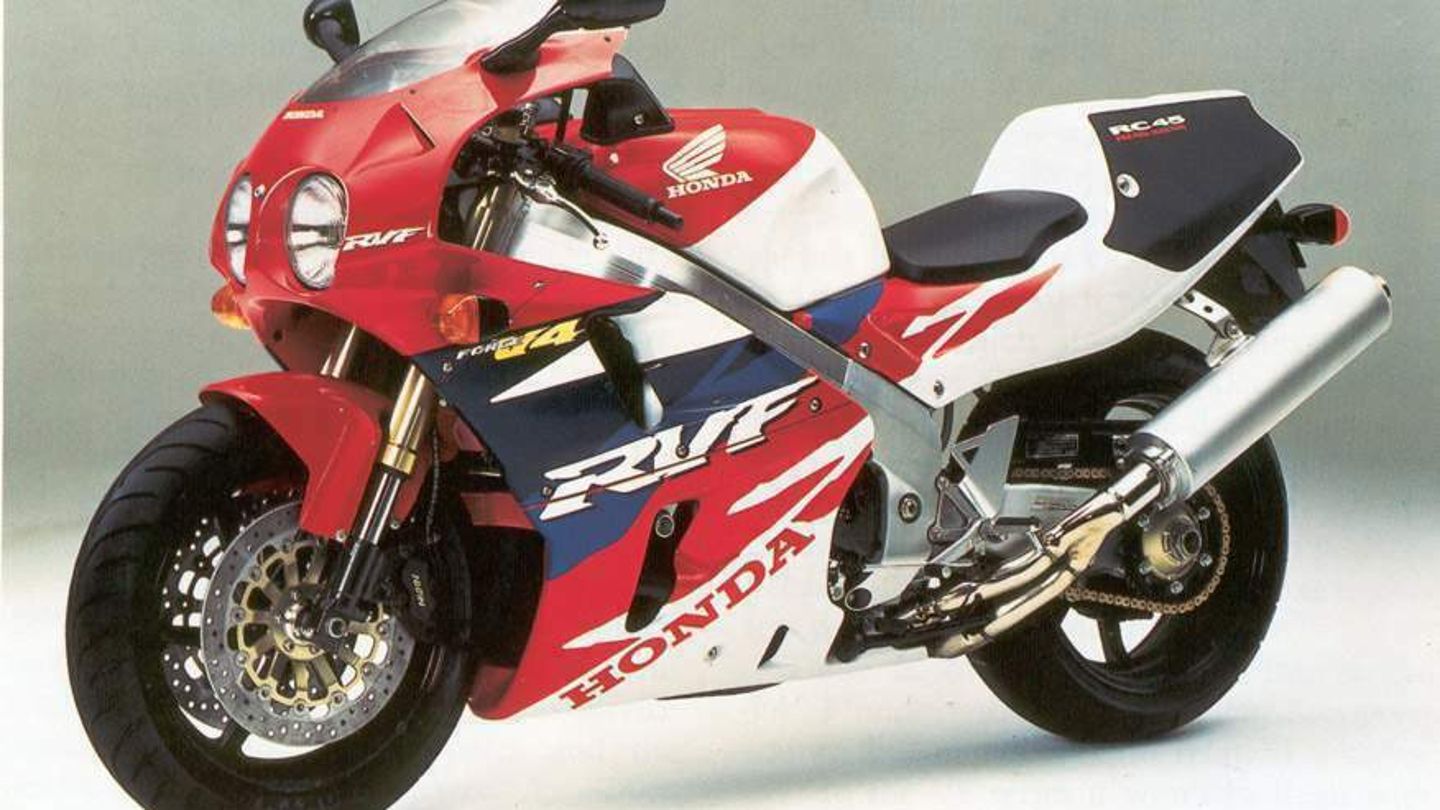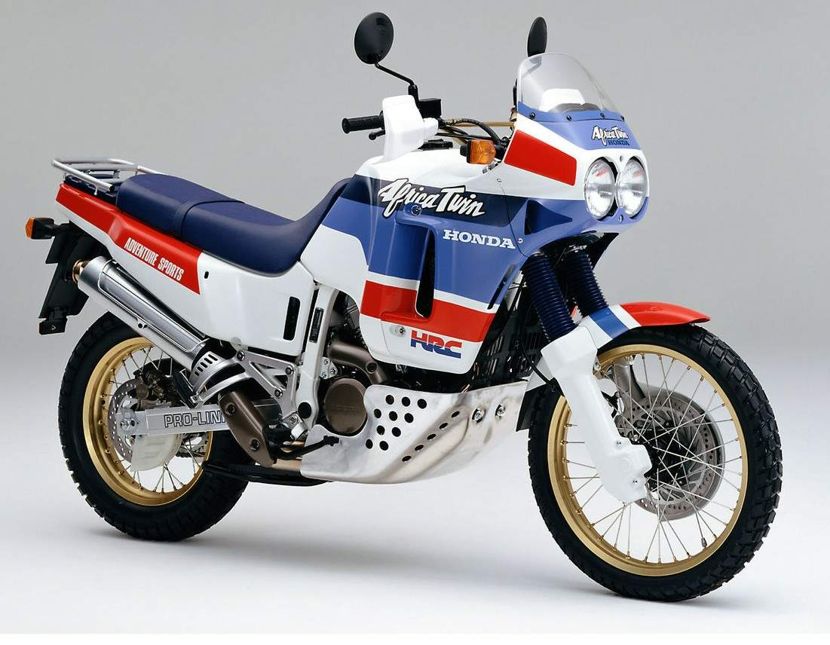Japanese motor engineering has long been praised as reliable, their creations known for longevity and value. From motorbikes to cars, you know you can’t really go wrong if you buy Japanese.
Prided for innovation and quality, Japanese motorbikes have been at the helm of performance for decades. Here we remember at some of our favourite iconic Japanese models that we think will be labelled as classics in the future:
Honda
RC45
After the success of the R30, Honda had a lot to live up to. Combining the traits of the RC30, factory RVF racers and the NR750, Honda created a masterpiece in the RC45, with some still claiming it to be the best Superbike ever. Only 200 were manufactured and it is estimated that only 20 are left in the US, making it one of the rarest motorcycles Honda has produced to date.
Designed using the greatest technology at the time in order to create a lightweight, top-shelf racing machine, the RC45 was completely overhauled in 1988. This version was more sophisticated and achieved unseen levels of comfort and performance.
CBR900RR
The first generation of the 900 was introduced in 1992, and with it, Honda completely revolutionised the standards of sports bikes. It was based off an advanced research model and charged with the task of matching the acceleration of similar competitor bikes – and did it ever.
Not only was the bike powerful, it was also extremely light. The closest comparison bike, Yamaha’s FZR1000, was more than 75lbs heavier than the 900, which was unheard of at the time. The original 900 would still be considered light today, only weighing in at 12lbs heavier than the current models. When you take into consideration how different the technology is 25 years later, it’s a testament to Honda’s ingenuity in the early 90s.
XRV750 Africa Twin
Prided for its suitability for riding both on and off road, the Africa Twin was one of the very first Japanese manufactured rally bikes. During the late 80s, long distance overland races were growing increasingly popular, and the Africa Twin was Honda’s answer to this demand. The bike was designed with extreme conditions and endurance races in mind and as a result, the NXR750 won the Paris-Dakar in 1986.
Over the years the Africa Twin has been further developed and perfected, but the XRV750 model remains almost a cult classic among adventure bikers.
Kawasaki
GPz900R
Immortalised in film by Tom Cruise’s infamous Top Gun character, Maverick, the GPz900R looks perfectly at home hugging the curves of the California coast.
The founder of the Ninja series was a long-term labour of love for Kawasaki, and was secretly designed and developed over the course of six years. The original model was released in 1984 and was instantly recognised as the standard for the modern sports bike, leaving other manufacturer’s efforts in the dust. The result was the first liquid cooled four-cylinder motorbike the world had ever seen which is still coveted by motorbike enthusiasts all over the world.
ZZR1100
Heralded as a true speed demon, the ZZR1100 was the world’s fastest production motorbike in 1990 when it was released. Clocking in between 169-176mph, it held onto this title until it was overtaken by the Honda 1996 Super Blackbird. Despite this, with the development of the ZZR1100, Kawasaki was responsible for the creation of an entirely new subcategory of motorcycle; the hyperbike.
The perfect machine for the adrenaline junkie, the ZZR1100 has long been a testament to Kawasaki’s ability to combine speed with comfort, allowing a sizable bike to achieve speed in a way none of its predecessors had ever managed to.
ZXR400
First released in 1989, the Kawasaki ZXR400 was one of the original 400 cubic centimetre sports bikes. Arriving in a more compact frame than some similar bikes offering the same power, the ZXR400 was known for being lightweight and extremely responsive, and an unparalleled thrill to ride.
The model had a long run, and continued to be manufactured until 2003. All along the way, the ZXR400 maintained its popularity against the test of time, with hardly any modifications occurring through the years.
Suzuki
GSXR750 SRAD
The SRAD range of the GSXR750 was released starting in 1996 and offered a new, more compact and lighter engine than earlier models of the 750. This, combined with increased power, made it a formidable and speedy bike and an improvement on earlier models.
The technical advances in this model were a real advance in the bike performance and production for the time. Clocking in at 185mph it was one of the fastest and sharpest handling motorbikes on the market, capable of easily tackling twists and turns at high speeds.
RGV250
In 1989 Suzuki introduced a powerful, yet surprisingly affordable race replica bike that was instantly popular. The RGV250 offered a fierce riding experience all wrapped up in a modern and clean, attractive design. Designed with the traits of Grand Prix bikes in mind, user reviews all agree on one thing: a wild and crazy ride.
However, it was definitely built for performance and speed over comfort. The RGV250 offered little luxury and instead was designed to withstand hard riding and offered a true racing feel, but along with that came excellent handling and responsiveness.
Yamaha
YZF-R1
Introduced in 1998 and still going strong, the YZF-R1 is a bike that has truly stood the tests of time. Thanks to its lightweight design, ground-breaking technology and 150 horsepower, the original model reached top speeds of 168mph.
The real excitement over the YZF-R1 was the introduction of Yamaha’s revolutionary “stacked gearbox” and compact engine, which provided higher levels of traction, stability and handling. Continually being developed and improved, over the years YZF-R1 has seen further perfecting of handling and response, as well as rider control and the fuel injection system.
YZF-R7
Produced in 1999 with only 500 units manufactured for the public, the YZF-R7 was a highly anticipated and limited-edition superbike designed for one purpose: to dominate the racetrack.
Remembered mainly for its exotic, attractive appearance and hefty price tag, the YZF-R7 proved to be a bit of a disappointment on the tracks. It was built as a contender for the Superbike World Championship and the Suzuka Endurance races, however it won neither. That being said, the R7 was still a fast and astoundingly powerful machine that captivated racing fans and motorbike lovers across the world.
Today, the R7 is somewhat of a myth, with the model being discontinued after two years and only two bikes still registered on British roads.










